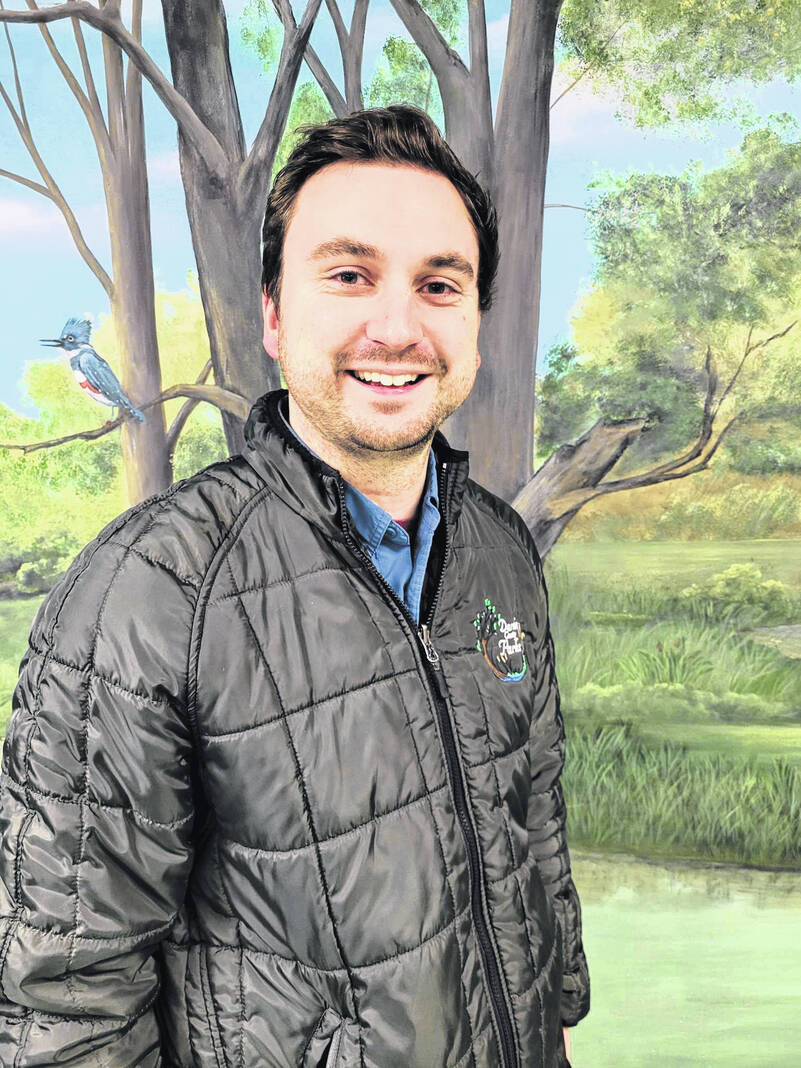
By Mitch Pence
Darke County Parks
When do you know spring has officially arrived? Is it when the Vernal Equinox passes? Or, could it be when you see the first ephemeral blooms opening in our forests? For me, spring has sprung when I hear Spring Peepers and Western Chorus Frogs celebrating the return of warm spring rains. From late March through early May, these small amphibians will call into the night in search of a mate. Eventually, they will be joined by Northern Leopard Frogs, Gray Treefrogs, and American Toads, forming an impressive orchestra of peeps, chirps, trills, and croaks.
There are many ways to enjoy our frogs and salamanders. While listening to the distant calls of our nocturnal, amphibious friends can be relaxing, have you ever attempted to discover their woodland concert venues? When the first warm spring rains arrive, seasonal wetlands begin to form within our woodlands. These mini ponds across the forest floor, called vernal pools, are essential to the survival of our native amphibians. The term “vernal” typically relates to spring (as in the “vernal equinox”) so you would also be correct in calling them spring pools, ephemeral pools, or even seasonal pools as they usually dry up come summer time. It is at these vernal pools where our amphibians’ symphony of calls and songs originate from.
Vernal pools play a pivotal role during an annual event called the “salamander run”. During or after the first warm spring rains, amphibians of all species will gather at these vernal pools forming within our woodlands. The fact that these pockets of water across the forest are not connected to any other water bodies makes them ideal for safely laying eggs and raising young without the constant threat of aquatic predators.Upon finding a mate, frogs and salamanders alike will lay their eggs in the water, attaching them to leaves, sticks, and other debris found under the surface of the water. If you happen to stumble across one of the many vernal pools within our preserves, be sure to look for what will appear to be gelatinous masses underwater. Upon closer inspection, you’ll notice that there are tiny spheres with a dark nucleus in the center. These are the eggs of frogs, while salamander eggs are similar in appearance, they are surrounded by an additional layer of gelatinous material. Once they hatch, tadpoles and salamanders will eat plant matter and insect larvae found in the vernal pool until they are developed enough to leave the safety of the water on their own.
While it may not seem like amphibians impact our lives more than simply providing nighttime ambience, their role in the greater biotic community is one of specific and significant importance. They are important for agriculture and human health because they eat insect pests, including mosquitoes! They have also been beneficial in medical research, providing potential for new pharmaceuticals like antiviral drugs derived from skin secretions.
Amphibians are amazing creatures and there’s nothing more fun than turning over a log to find salamanders hiding beneath (just be sure to cover them back up). Or walking along the banks of the creek or wetland and seeing the blur of a frog you spooked, ker-plunk, back into the water. The emergence of these sensitive, but amazing animals is the moment I believe that spring is underway. Soon, flowers will be in full bloom and the trees will begin to wake with colorful warblers filling their branches, singing in celebration. Although, I still believe nobody is happier for the arrival of spring than our many native amphibians. And I’ll continue to celebrate their happiness.
For information about Darke County Parks, visit www.darkecountyparks.org or call the Nature Center at 937-548-0165




